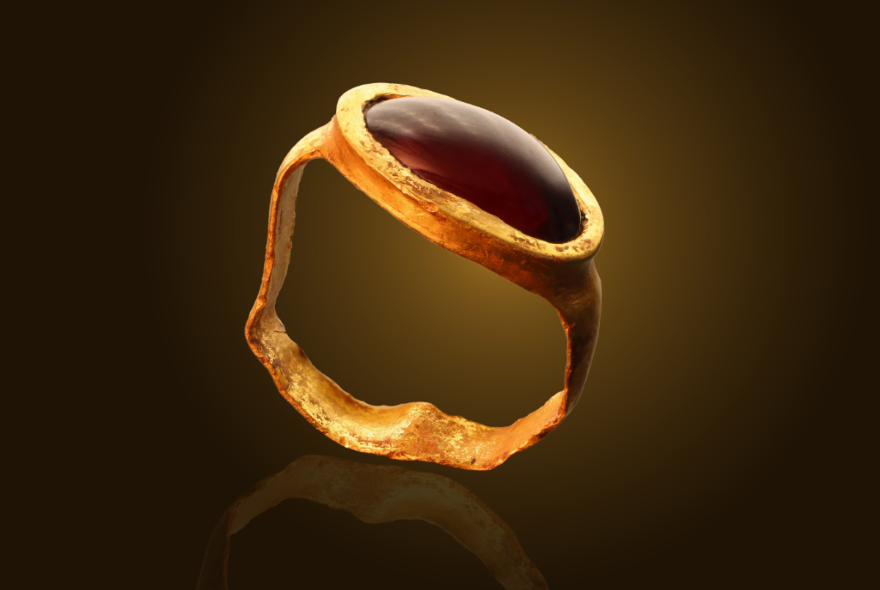
A gold ring set with a red gemstone, approximately 2,300 years old, was discovered during excavations conducted by the Israel Antiquities Authority and Tel Aviv University in the City of David in the Jerusalem Walls National Park, funded by the Elad Association.
Don't miss: The big raffle for a Torah scroll and prizes worth 150,000 NIS
This is the second gold ring to be uncovered in less than a year, from the same excavation and from the same period.
Rebecca Langler, an excavator in the City of David who was present at the moment the ring was uncovered, says: "We were filtering the dirt in a sieve next to the excavation, and suddenly Ben, who works with me, pulls a gold ring out of the dirt. At first he was sure it was a modern item that fell into one of the excavations, but when I looked at the ring, I immediately realized that it was something ancient. We called the archaeologists, everyone gathered around us and marveled at the special find. It was very moving.
"At first glance, you could see that the ring was very similar to the one discovered in the excavation a few months ago, only it was even smaller. When I held the ring in my hand, I felt part of my history. I felt like I could really touch and connect with the people who lived here in Jerusalem thousands of years ago."
The excavation directors: "The two gold rings were uncovered in a layer dating to the late 3rd century or early 2nd century BC, in the foundations of a large-scale structure, which attests to the wealth of its inhabitants.
"In the same layer where the rings were discovered, a number of bronze earrings were also recently uncovered, and a few years ago, a gold earring decorated with the image of a horned animal and a decorated gold bead were even discovered in this area - all dating to the early Hellenistic period."
Photography and editing: Emil Aljam and Assaf Perry, Israel Antiquities Authority and the City of David
Dr. Marion Zindel of the Israel Antiquities Authority, who led the ring research: "The fact that the two small rings and the rest of the jewelry were discovered under the floors of the building raises the possibility that they were buried there intentionally."
According to her, "One of the possibilities currently being examined is that the placement of jewelry in the foundations of the building occurred as part of a well-known custom from the Hellenistic period, in which engaged women would bury jewelry and other objects from their childhood in the foundations of the house, as a symbol of the transition from childhood to adulthood."
She notes that "jewelry that combines gold with brightly colored precious stones, such as garnet, is well known to us from this period, when fashion was influenced by Eastern countries such as India and Persia. The fashionable influences were made possible thanks to the conquests of Alexander the Great and the opening of trade channels with these regions."
Efrat Botzer, one of the excavation directors: "This is the first time in Jerusalem that we have found such a large hoard of gold jewelry from that period. This wealth is very rare in any archaeological layer, and it testifies to the wealth of Jerusalem and the high standard of living of the city's residents during this period."